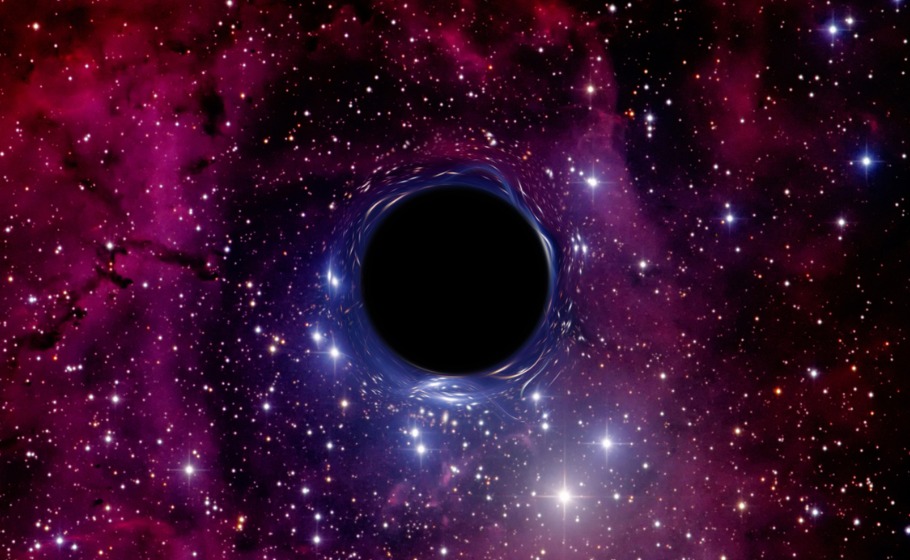
Shedding light on the mystery called black holes
Einstein, in late 1915, theoretically established that space and time were not different entities but formed a four-dimensional continuum, like a "sheet" which would warp into curvatures depending on the energy and momentum of the bodies in it.

Even by the standards of Nobel laureates, Einstein’s theory of general relativity was “the greatest scientific discovery ever made”. Einstein, in late 1915, theoretically established that space and time were not different entities but formed a four-dimensional continuum, like a “sheet” which would warp into curvatures depending on the energy and momentum of the bodies in it. This curvature is gravity. The perspective was a marked deviation from classical physics which viewed gravity as deriving from mass, while general relativity viewed mass, energy, and momentum interchangeably.
However, even Einstein was not ready to accept all the implications of his theory. When Oppenheimer correctly concluded in 1939 that a heavy spherical star when collapsed would end up with a boundary into which nothing would be visible (called event horizon), Einstein would not agree.
Related news: Physics Nobel to Roger Penrose, Reinhard Genzel, Andrea Ghez
In the early 1960s, waves of high intensity were discovered (quasars) which were emitted from sources outside our own Milky Way galaxy. Considering the distance of the source and the power of the radiation, it could only come from an as-yet-unexplained super-heavy entity, since stars couldn’t be that heavy and also be stable. These entities, called the black holes, would have event horizons as their boundaries. Any light crossing the event horizon would be absorbed by a black hole, due to high gravity. A generic explanation of physics behind black hole was yet to be discovered.
Roger Penrose (University of Oxford), a legend in mathematical physics, defined something called “trapped surface” in 1965 whose property was that it would allow light to pass towards the center of black hole (singularity), where all mass would be concentrated and time would cease to exist. A trapped surface would always direct the light to singularity. Light cannot go beyond singularity because that will mean going back in time, an impossibility. Penrose also established that the collapse of matter into a singularity in a black hole would always happen after a trapped surface was formed. Such black holes were the sources of quasars.
Related news: Explained: What are CRISPR-Cas9 genetic scissors?
Subsequent results from other researchers established that black holes commonly occurred in most galaxies, including Milky Way and that a portion of energy of a collapsing star could be emitted as radiation (that would power quasars etc.) while the rest remained in a black hole.
Observing a black hole could be only done indirectly until a decade ago. In 1974, radio astronomers recorded a compact object in Milky Way’s center, in the region called Sagittarius A* (“Sgr-A*”).
Reinhard Genzel (Max Planck Institute, Germany) and Andrea Ghez (University of California) developed new techniques throughout the 1990s and early 2000s to track the orbits of stars moving around the suspected black hole, “Sgr-A*”. Removing the blur caused by the earth’s atmosphere in images was required to investigate the orbits. This was done by multiple short exposures where a blur could not register and then combining the images (speckle imaging). Another sophisticated solution was called the adaptive optics technique: a laser beam served as an artificial star and its atmospheric image distortion observed and corrected by creating distortions in the telescope’s mirror. Then this telescope was pointed to “Sgr-A*” to observe the orbits of stars around “Sgr-A*”.
Related news: Scientists spot huge black hole that shouldn’t even exist in our galaxy
Genzel and Ghez observed that a star, S2, completed the orbit around Sgr-A* in just 16 years (the Sun takes 200 million years !!). The heavy mass of “Sgr-A*” accelerates the star to tremendous velocities. Based on the distances of S2’s orbit and that of the orbits of other stars in “Sgr-A*”, the teams could estimate the size of “Sgr-A*”. And it’s a mass estimate (4 million times that of Sun) and its relatively short size led to the inference that “Sgr-A*” was a supermassive black hole.
The Nobel Prize in Physics 2020 was divided, one half awarded to Roger Penrose for the discovery that black hole formation is a robust prediction of the general theory of relativity, the other half jointly to Reinhard Genzel and Andrea Ghez for the discovery of a supermassive compact object at the center of our galaxy.


